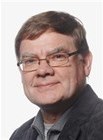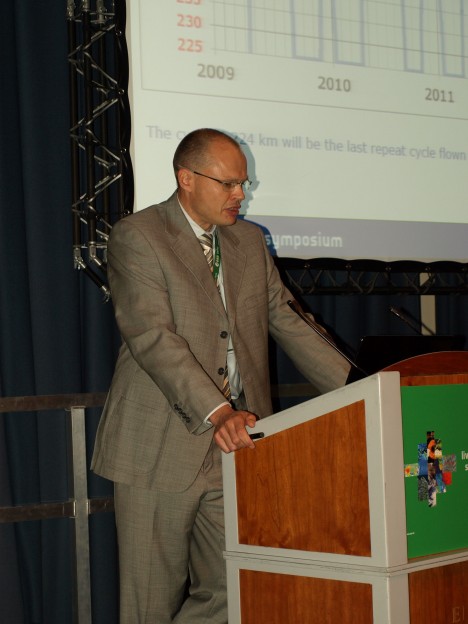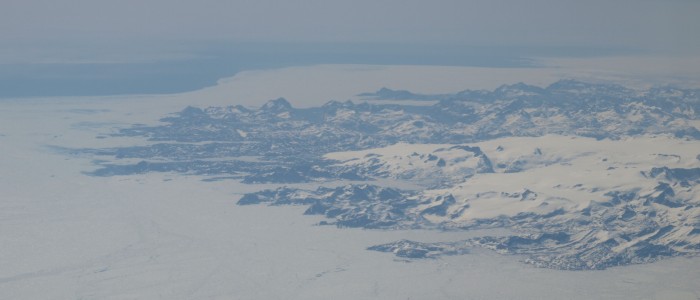Eigil Friis-Christensen – “The Father of Swarm”

Professor Emiritus Eigil Friis-Christensen. Credit DTU, Denmerk
In spite of the fact that all space projects obviously could not have been carried out without the combined efforts of all members of the team involved, behind all projects, there undoubtedly are those idea-makers, researchers and motive powers that tie it all together. From the idea of Swarm project Professor Dr. Eigil Friis-Christensen, has been a driving force in the project team. Even before the predecessor Ørsted was launched, he, together with colleagues in the Ørsted team, proposed a successor that could provide even better resolutions of the “Geomagnetic Earth”.
Through the Ørsted Project and its international team, they gained an even better knowledge about the Earth’s magnetosphere and a clear opinion about how more knowledge could be obtained, something which proved to be a great advantage for the Swarm Project. Eigil Friis-Christensen says the following:
-In the large picture of space research, Denmark is a very small participant, but in the Swarm Project Denmark and DTU Space are very visible, a clear result of the Ørsted Project and, not least, what we have accomplished demonstrates high competence within this field.
Eigil Friis-Christensen was Director of the Danish National Space Center (DNSC) since 1997. During a major reorganisation of the research institutions in Denmark, DNSC merged with the Technical University of Denmark (DTU) in 2007 and he is now Professor Emeritus at DTU Space, the space related division within the university. As Professor Emeritus at the institute, he has handed over the leading positions to younger personnel at the university, and he fully concentrates himself on scientific tasks.
– The research I do is very exciting and I hope I can continue the work for several years to come. There are two projects I would like to continue with, one of which is the Swarm Project. The other one is whether ionizing of the atmosphere creates aerosols and clouds and if so, how does it affect the climate on Earth.
– In a laboratory at DTU, the researchers have created clouds through ionizing of air. Therefore, if the possibilities exist in a laboratory, is it possible the same may occur in the real atmosphere, Friis-Christensen wonders.
Eigil Friis-Christensen’s research interests has always been within the fields of geomagnetism and solar-terrestrial physics. He completed his PhD. at the University of Copenhagen in 1971, and started his scientific work as Research Scientist at the Division of Geophysics at the Danish Meteorological Institute (DMI). Here he took part in the establishment of the Greenland Magnetometer Array of which he became the leader in 1976. He became Head of the Solar-Terrestrial Physics Division (DMI) 1991-1997, and was appointed project scientist of the first Danish satellite, Ørsted, launched in February 1999. He was leading the Danish research and instrument teams and established an international science team consisting of more than 60 research groups from 16 countries.
Eigil Friis-Christensen is author or co-author of more than 140 research papers and has presented more than 50 invited papers at international conferences in addition to a large number of contributed papers. In addition he has lectures worldwide.
He has been – and is – engaged in many international projects, not to mention the Swarm Project. In 2002 he was appointed as Lead Investigator and chair of the Mission Advisory Group (MAG) for Swarm “The Earth’s Magnetic Field and Environment Explorers”, which was selected as the 5th Explorer mission in the Earth Observation “Living Planet” Programme of ESA.
Eigil Friis-Christensen has been deeply involved in the European Space Agency, and joined ESA’s Science Programme Committee, SPC, in 1998. He was appointed member of ESA’s Earth Science Advisory Committee, ESAC, in 2003.
On occasions, he also sometimes eagerly debates other issues of interests within different scientific fields, in particular the field of climate.
He has asked for more research concerning the correlation between the climate and the sunspot activity, thus confirming or weakening the theory that such a correlation exists. Within the term of cosmoclimatology he and Dr Henrik Svensmark also revived suggestions of a possible link between galactic cosmic rays and global climate change assisted by solar wind intensity variation.
His theories and questions are sometimes beyond the accepted climate theories and have sometimes created sharp debate, however, in his opinion, CO2 is possibly the main source for the increasing temperatures on Earth, and nevertheless, the variable solar activities are possibly as influential.
– I will not be involved in the political debate, but as a scientist, I must point out all possible correlations. It is not a secret that I believe that the natural variations in the solar activities and other influences from space have been underrated in the debate.
-The climate models that have been used fail to understand the natural variations in the solar activities and other natural influences from space. One should not always follow the consensus. If you want to achieve results, you must also have your own theories and try to prove them.
Eigil Friis-Christensen is still outspoken and brave enough to stand firm on his beliefs, even though they may not correlate with the established scientific community.
Ensuring Data for the Scientific Community

Rune Floberghagen. Mission Manager for the Swarm project.
Credit: NordicSpace
NordicSpace talk with the Mission Manager for Swarm, Rune Floberghagen
Carrying out a space-project is a very long and complicated process that involves a large number of people; from the scientists who come up with the brilliant ideas, to the engineers and technicians that build, launch and operate the satellites, to the scientists that ultimately use the data for their specific scientific tasks.
With regard to the Swarm Mission, Rune Floberghagen is the Mission Manager. He was also Mission Manager for the GOCE satellite to the end of the mission, and continues further with the data exploitation efforts. However, from now, his focus is also towards the Swarm satellites.
NordicSpace conducted a telephone interview with Rune from ESRIN near Rome where he currently resides.
-A project like Swarm is divided into several phases; from the idea to the operational phase in space. The Project Manager is in charge from the moment the project is formally approved for full implementation until the satellite is commissioned and enters in full operation. When the satellite is finally in space the Mission Manager takes charge. However, the Mission Manager has by far been idle in the preliminary phase; his or her job starts way before the satellite is in orbit, carefully and thoroughly planning how to collect, distribute and utilise the received data as well as the derived higher level science products in the best possible way.
– The GOCE mission is finalized. As for me, personally, it is timely to shift focus to the Swam mission. Swarm is a logical continuation of my interest in geopotential, and offers a wealth of new insight into the inner working of planet Earth, as well as the solar-terrestrial interaction.
Rune Floberghagen, a native of Norway, began working at ESA’s European Space Research and Technology Centre (ESTEC) in the Netherlands in early 2001 and relocated to ESA’s Centre for Earth Observation (ESRIN) in Frascati, Italy, in December 2007 to assume his role as Mission Manager for GOCE.
Floberghagen earned both his Master’s Degree and a PhD in Aerospace Engineering from Delft University of Technology in the Netherlands before he joined ESA.
-The GOCE and Swarm missions are closely related. Both are so-called Earth Explorer missions within the geosciences field and it was not a difficult choice to accept the post as Mission Manager for the Swarm Mission. However, it was be busy sometimes. In addition to critical operations at the GOCE satellite, the Swarm Mission is in a busy phase after launch, and not least, making plans, receiving, processing, distributing and storing data from the satellite, all of which is a hundred percent job for the Mission Manager. Ideally, planning how the data best can be used must start in the early building phase aiming to provide the users with the best possible data for further research. Luckily, I have excellent team members who have taken care of a large bulk of this work, even before I entered the project.
-What makes Swarm particularly special is that is covers the whole spectrum from the outer part of the core, through the mantle and out in the magnetosphere where the magnetic field interacts with particle streams from the Sun. Swarm will make it possible to separate between the different contributors to the magnetic field.
-You followed the GOCE mission almost from the start; first with the development and building phases, whereupon you followed up in the end as Mission Manager. When it comes to the Swarm Mission you will join the project shortly before launch. What is the difference?
-The main difference is that I know the GOCE satellite and all of its components much better than I know Swarm. Participating in developing and building a satellite provides a unique insight in how a satellite is built and how it acts. Obviously, much of the knowledge one has acquired can be copied and transferred to Swarm, but I know GOCE better. I read the drafts, participated in developing, building and testing. I know the algorithm etc., all of which is valuable knowledge for a Mission Manager. When I joined the ESA in the year 2000, some of the motivation was to follow a mission from the start to the end, thus, participate in the whole lifespan of a mission.
-In a developing and building phase the Project Manager is mostly focused on hardware and industry, whereas a Mission Manager will be much more focused on the “end user”, meaning one’s main priority is to deliver the best possible data. In short: to deliver the mission, terms of achieving the highly challenging mission objectives.
-Developing and building a satellite is a typical team work. Is the data acquisition and distribution nearly the same?
-Yes, it is. The mission management team will be a combination of technical engineers, instrument experts, data, algorithm and software experts and scientists, obviously. A typical team ideally works together to provide valuable and reliable data for the users. An Earth Explorer satellite is built with another philosophy than operational satellites such as Sentinel and, to a certain degree, Envisat. They are built for monitoring purposes and deliver data if critical events like earth shakes, volcanic eruptions or floods happen. The Earth Explorers do not depend on data at all hours of the day, in near real-time; they are responding to burning science needs, and sort of grow out of the science “laboratory”. The main priority is to respond to what the scientific community demands; understanding how one or more parts of “System Earth” work and interact, working with algorithms and delivering specific and accurate data when needed; In short, generating the best data for further research.
-Who owns the raw data from the satellites and to what degree is it accessible for the scientists and others?
-In theory ESA owns the data, but the data is freely accessible for users worldwide. ESA’s data policy is “free and open”, and the users can use the data for all types of research. Previously, there were some restrictions regarding the use, however, a few years ago the ESA changed the policy because one realised that free and open use of the data for all is the best way to ensure that our data are optimally exploited for valuable science and application purposes worldwide. Chances for results are often proportionally bigger while the number of researchers increases.
-Where will the data be received?
-ESA’s ground station in Kiruna, Northern Sweden, will be the main receiving station. Whether or not more capacity is needed, remains to be seen. From Kiruna the science data will be transmitted to Farnborough, UK. Here the data will be processed to Level 1 product, stored or sent to the different research institutions for further processing to Level 2.
-Danish Technical University of Denmark is one of the main institutions for processing of data and building of the geomagnetic models. The Level 2 products then return to the Farnborough Processing and Archiving Centre. The centre will both distribute the data to the users and store both Level 1 and 2 products for further research. The Level 2 products are freely accessible for all.
-ESRIN’s role is to manage the whole organisation, control the data quality and be in contact with the scientific teams as well as the end users.
-What are the expectations for the data from the Swarm Mission?
-We all have great expectations for the mission, of course. Firstly, it is commonly agreed that the Earth’s main magnet field is generated in the liquid part of the core, the outer core, through a magneto-hydrodynamically running geodynamo. But how the dynamo functions and evolves is a more difficult topic to address. The total magnetic field measured by satellites is a combination of different sources like the geodynamo as the main source, but with contributions from the lithosphere, the ionosphere, the magnetosphere, and even from the oceans. With the Swarm mission, consisting of three identical satellites which measure the field in different places and conditions at the same time, one hopes to separate the different phenomena from each other to better find the main field; the activity in the core, how the flows in the core develop. Those answers may possibly provide clues as to how and why the main magnetic field changes and how and why the magnetic poles move etc. On top, we will come up with much better estimates of all other contributors to the total field, mentioned above.
-Over the past two hundred years the magnetic field has decreased some ten percent, something which is a drastic change, however, this may possibly lead to answers as to why the poles sometimes change directions. The main goal for this mission is to better understand and possibly predict these changes. Better separation of the different sources is one of the reasons for the increased data quality in relation to the previous single satellites, like Magsat, CHAMP and Ørsted.
-Other new products the satellites will provide are: the conductivity of the mantle, for the first time in 3D, and possibly also the water circulation in the oceans through its magnetic signature (conductive sea water moving in the main magnetic field of the Earth). These are, however, very weak signals, close to the noise level in our instruments, and therefore difficult to separate.
Misson Management
Wath is Mission Management
ESRIN, the ESA Centre for Earth Observation, is responsible for managing the operation of ESA’s own Earth Observation satellites once they are in orbit. Different missions has own characteristics, but generally, each ESA Earth Observation satellite has a Mission Manager and he or she is responsible for the satellite during its operation and for the service ESA offers the many users of satellite data. This entails ensuring mission objectives are met and addressing users’ requirements.
To do so, Mission Managers work with those directly responsible for planning and supervising data acquisition and archiving, as well as product generation and dissemination at ESRIN. Mission Managers also liaise with their colleagues at ESTEC and ESOC to resolve any satellite problems that may arise and to request the changes that may be needed to the spacecraft and its instruments to meet requests for specific data.
Earth Observation Missions by other space agencies, known as Third Party Missions, also come under an ESRIN Mission Manager. Third Party Missions include satellites like the French SPOT and US Landsat satellite series and other.
In general, each mission lasts from between 5 to 10 years. Once a mission is completed and the satellite is no longer transmitting data, it falls to the Mission Manager to ensure that data remain accessible for long-term exploitation, and to organise and document a thorough evaluation of the mission to record the highlights. These lessons are then fed into the definition of new mission scenarios for the future.


